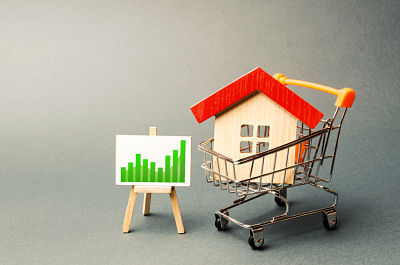
It is theorised that the property market follows a predictable cycle of behaviour over time – termed the property cycle. Historical studies suggest that global and regional property markets conform to a pattern of differing stages. These stages consist of ‘the Boom’, ‘the Slump’ and ‘the Recovery’. It is believed that the property market moves through each stage consecutively in a consistent and predictable pattern.
The Property Cycle Boom
The pinnacle of the property market cycle is the Boom phase. The boom phase occurs when both property prices and rents are driven up by excessive demand. The phase is identified by easy access to finance and a corresponding increase in borrowing. Investors are able to borrow more easily and more excessively than in previous phases as confidence in the property market skyrockets. The Boom phase is categorised by unerring confidence as investors and commentators argue that ‘this time it’s different’ and the price increases are sustainable.
The Property Cycle Slump
Following on from the Boom is the Slump phase. Property expectations crash back to earth and the repercussions of Boom fuelled decision making catches up on investors. As the property market grinds to a halt, access to credit dries up. Investors and homeowners alike step back from the market, reducing demand and causing property prices to stall or even fall.
The Slump phase can last a number of years and does not always coincide with a housing market bubble popping, as was the case after the Financial Crisis. Sometimes, the Slump can occur gradually as investors begin to doubt the sustainability of the Boom phase and common sense begins to return to the market.
The Property Cycle Recovery
Typically the shortest of the three stages, the Recovery phase marks a return to growth for the property market. During this phase, many investors will question whether the increases in rents and prices are sustainable. Once confidence returns, this phase naturally transitions back into the Boom and the whole process begins again.
Why Should You Care About the Property Cycle?
In truth, arguments about the property cycle are relatively abstract. They rely on the immeasurable benefit of hindsight to provide a framework for predicting the market. The reality is that even if you had bought a property at the peak of 2007 before the financial crash, if you held onto the investment, it would have turned profitable by mid-2014. Historically, the general trend is upwards and time tends to trump theory.
That being said, it is worth considering property cycles when investing as they tend to be a self-fulfilling phenomenon. Easy access to finance, low yields, rising prices and quick sales are all indicators of a frothy property market. What is more, many investors do take theories such as the ‘18 Year Property Cycle’ seriously and this drives their decisions. As such, landlords and investors should be aware of property cycles generally, if as much to simply identify signs of market mania.
Where in the Property Cycle are we Now?
The million-pound question is, what stage of the property cycle does 2021 fall into? By many metrics, 2020 and early 2021 show all the signs of the Boom phase. It is historically cheap to borrow and products such as the 95% mortgage are coming to market. In some areas, house prices have increased by up to 10% over the past 12-months. Even rents are climbing higher as changes to legislation have pushed landlords from the market. So, on paper we are in the Boom phase.
However, the property cycle theory rests on free markets – or at least relatively free markets. It is hard to say that the current property market is either conventional or indicative of a free market. Whilst borrowing is more readily available, average household savings have increased significantly. Prices have increased, driven by both a temporary reduction in Stamp Duty and, perhaps, a more sustainable change in homeowner preferences due to the coronavirus.
It is likely that over the next 12 months, house price growth will slow or stall. This will as much be a result of government legislation (the end of the Stamp Duty Holiday) than any innate property cycle. Whether this proves to be temporary or protracted is anybody’s guess however, should prices stall there may finally be an opportunity for investors to begin finding reasonable value properties once again.
Disclaimer:
This ‘Landlord Vision’ blog post is produced for general guidance only, and professional advice should be sought before any decision is made. Nothing in this post should be construed as the giving of advice. Individual circumstances can vary and therefore no responsibility can be accepted by the contributors or the publisher, Landlord Vision Ltd, for any action taken, or any decision made to refrain from action, by any readers of this post. All rights reserved. No part of this post may be reproduced or transmitted in any form or by any means. To the fullest extent permitted by law, the contributors and Landlord Vision do not accept liability for any direct, indirect, special, consequential or other losses or damages of whatsoever kind arising from using this post.



